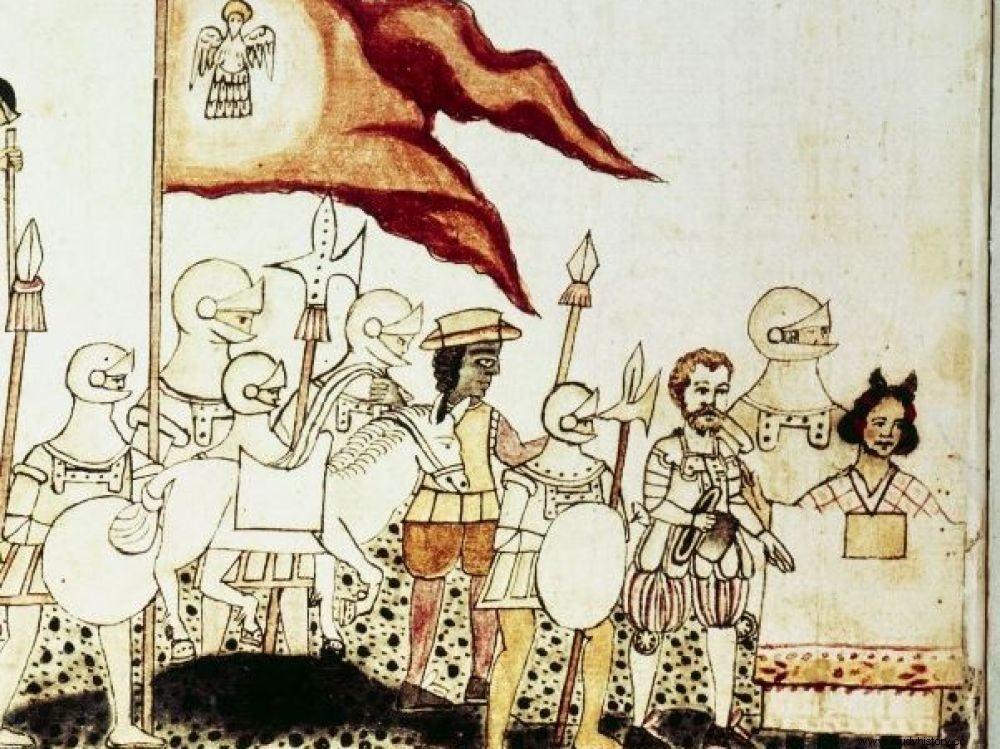First-hand testimony, the little-heard word of the Indian elite who chose the Spanish side, told 60 years after the conquest of Mexico in the 16th century century. An exciting book by historian Serge Gruzinski.

Hernan Cortes arriving in Mexico, accompanied by La Malinche, or Dona Marina, his Native American mistress and adviser, with whom he had a son.
It is to discover the first colonial society of Europe - Mexico of the XVI th century - as much as that of Iberian globalization, which the historian Serge Gruzinski leads us to. Former professor at Princeton University (United States), director of research at the CNRS and at the Ecole des Hautes en Sciences Sociales (EHESS), the author of Conversation with a half-caste from New Spain (Fayard editions) takes us into a world he knows well, that of New Spain, the Mexico of the Renaissance. Serge Gruzinski, already author of The Métis Thought (1999), lets hear the authentic words of the half-breed Diego Munoz Camargo, son of a conquistador and an Indian from the aristocracy of Tlaxcala, a city that had formed an alliance in 1519 with Hernan Cortès, conqueror of the Aztecs. An unusual voice and journey, which in these times of Political correctness (politically correct) "forces us to revisit our binary vision of this era, fossilized in a clash between Spaniards and Indians", explains the historian.
An imaginary dialogue with a cultured half-breed
In this imaginary dialogue that he establishes with this cultured and powerful mestizo born in the New World, Serge Gruzinski uses the words that the latter really made in the Relaciones geograficas and the Description of Tlaxcal a (1585) of which he was the editor. This information, intended for the sovereign of Spain Philip II, constituted the answers to a series of questionnaires sent to New Spain by the Council of the Indies. True statistical studies of the time, these "240 Questions" gathered information about Mexico's indigenous societies and how they functioned. An unknown inventory which concerned both the mining and agricultural wealth of the country and its geographical description. All areas were questioned:physical and health status of populations, food, religions and ancient gods, descriptions of the most powerful families, etc.
This investigation allows us to hear, 500 years after the Conquest (1519-1521), the voice of this contemporary of Michel de Montaigne who mastered Castilian as well as Nahuatl , and who even went to Spain to meet Philip II in Madrid. The Catholic monarch who then dominated all of Europe and part of the globe, and who was obeyed from Tlaxcala to Goa, Manila or Macao, as much as in Seville, Lille, Antwerp or Milan. What better to understand the unknown history of the Indians of the nobility who chose the Spanish camp, and whose condition of mestizo had no impact on their success as they knew how to adapt to the new American society born after the collapse of the Old World.
A book full of information on the inhabitants of colonial Mexico told by one of his children "who became the interpreter of a group that managed to stay afloat, in a society broken by the irruption of the 'West ", or how to adapt in a globalizing world, when everything is changing around you. Fascinating.
